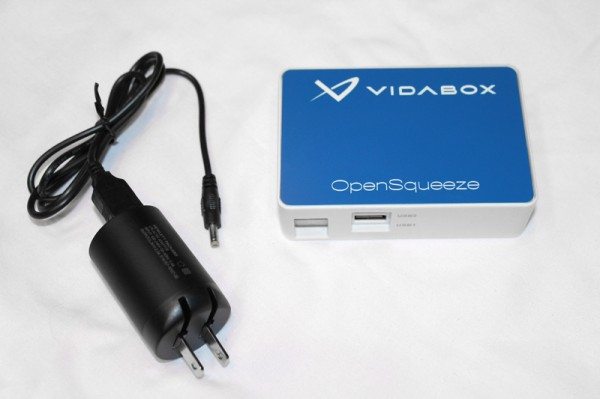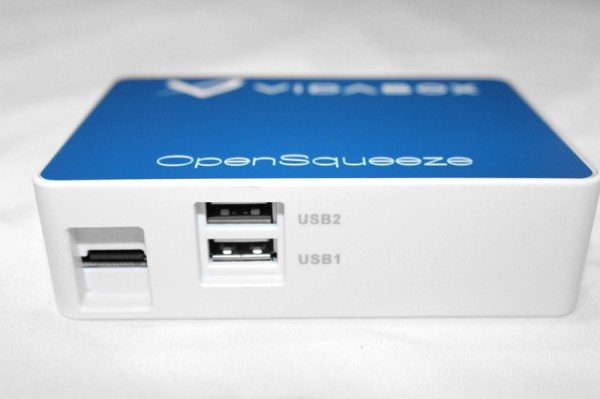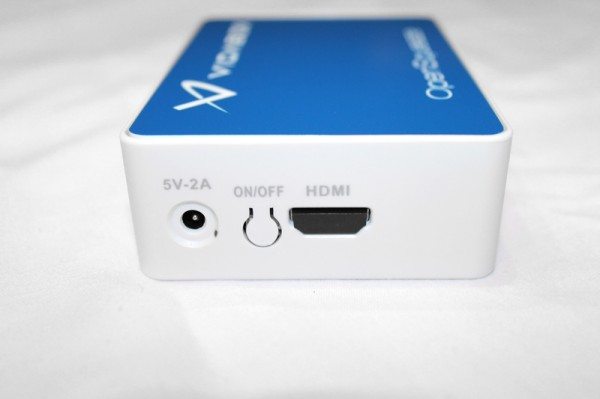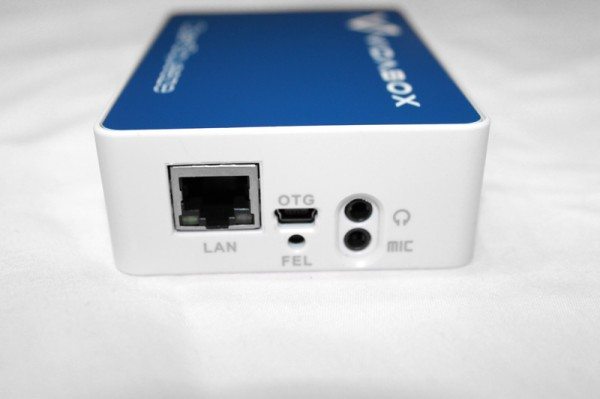I have been looking for a solution for some time to play music throughout my whole house. Spending time and money to run wires throughout the whole house is not an option in my current house, so of course I looked to wireless solutions. I don’t have a sophisticated stereo or audio system of any kind, so I suppose I would consider myself just an average consumer when it comes to that aspect. I have numerous computers throughout the house and a few of those wireless/Bluetooth speakers, but they don’t all connect together and enable me to play the same music throughout the whole house. Sonos has several products that I have experienced and coveted for some time, but they seemed pricey to me. So when the VidaBox OpenSqueeze Solo came around it caught my eye. Was this the device that I could afford and would solve my problem? Would it perform as solidly as the Sonos players I have seen and experienced? Let’s find out!
Let me start by saying that this review is not a comparison review between the VidaBox OpenSqueeze Solo (hereinafter referred to as the Solo) and any Sonos players. But I did include some misc comparisons because I feel like if you are going to review a wireless music setup for your home then it makes sense to compare it at least on a basic level to the ‘standard’, if I may be so bold to call Sonos the ‘standard’. Just like if I were reviewing an Android tablet, readers would expect a comparison on some level with the iPad. Now let’s look at the requirements to use this device.
Requirements / Specs
You will have to install the Logitech Media Server software (more on that later) for either MAC or PC. The Solo needs to be plugged up to power of course, and you will need to directly connect the Solo to an available Ethernet port on your network or connect a wireless adapter to the Solo because it doesn’t have built-in wireless. VidaBox suggests the TP-Link wireless adapters which can be found online for about $20 each. You’ll also need a speaker of some kind to connect to the Solo because it does not have a speaker built into it.
The Solo is 4.25 x 2.9 x 1.2 inches in size and weighs 4.1 ounces. As you can see from the pictures below, the Solo has a power jack, an HDMI port, an Ethernet jack, a mic jack, and headphone jack, 2 USB ports, 1 USB on-the-go (OTG) port, and a T-F port.
Setup
If you buy this $239 product it comes with extensive step-by-step instructions so I don’t feel the need to explain every step I went through to set it up. But I will mention a few things about the setup experience to give you an idea of where I am going with this. The basic concept of the Solo is this: connect the device to your Internet network anywhere you want it in your house, then use your Internet-connected computer or cellphone to control the playback of music through the Solo. Before that though you have to create an account at www.mysqueezebox.com and choose which streaming music services you want to use with the Solo, then you install the free Logitech Media Server software on your computer and make sure it stays active in your system tray. When you enter your Mysqueezebox account into the Logitech software it ‘connects’ your computer to the Mysqueezebox website. Then when you want to control the music you open the Logitech Media Server web interface.
If it sounds like it seems a little awkward, well you are right. I don’t know how else to explain it except that the setup and usability of this device just isn’t as polished as it needs to be, considering that competing devices such as the Sonos system are much more polished. For example, you set up your account and all your streaming music stations at www.mysqueezebox.com but you have to use the Logitech web interface, launched from the Logitech Media Server icon in the system tray, to actually control the music.
I have been an IT professional for about 15 years, and a gadget geek for more years than that. So I am comfortable setting up software and technology devices. My opinion is that I would not expect my parents or my wife to set this device up. I just don’t see it happening. I use their skills as a ruler to measure whether or not the average consumer could handle it, and I honestly think they would give up before finishing. Or rather, they would call me confused. Another example: to confirm that your Solo is connected properly to your network you have to look in your computer’s Network area. Do you know how to get to that? Would your wife or parents know how to do that or understand that?
Performance
After I got the Solos set up (I got 2 of them), they performed flawlessly. If you have iTunes on your computer then the Logitech Media Server will recognize it and your music will be available to play through the Solo as well. That also worked great. I do think the streaming music choices available to you through the Mysqueezebox website are limited though. For example, if you want to use Pandora or Spotify you will need a premium account. I did set up my free Slacker account and there were a few other free Internet radio services I had never heard of that I picked. They all worked. But I use Pandora and Spotify free services on my pc and phone daily, so I was a little disappointed about that.
I installed the Squeezbox Android app on my phone and logged in with my Mysqueezebox account. Again, it performed flawlessly. I was able to play all the music in the app just like I could do using the web interface.
Just like the Sonos products, you can play music to each Solo individually or play the same music through all of your Solo devices at the same time. That was the main feature I wanted and my 2 Solo boxes accomplished that as well.
Bottom line
When I pulled the trigger on the Solo I was surprised to learn when I opened the box and started looking at the instructions that it did not have built-in wireless capabilities or a built-in speaker. I honestly don’t know how I missed that when I looked at it initially, but I did. I suppose I just assumed it was similar to the Sonos products that I was familiar with, and I shouldn’t have done that. That was my fault for not paying closer attention. So the $239 cost goes up when you have to buy a wireless adapter and a speaker for each Solo. That pushes the cost past the cost of an entry-level Sonos 1 speaker. Yes, you would need the required wireless Sonos bridge for your home network so the Sonos speakers can connect to your network, but even then you are still less than the cost of the setup for a Solo. And the usability of the Sonos product is so much easier and polished.
I think if you are a DIYer or hobbyist then you might be happy with this product. In fact, the Solo is a Linux box so you can actually connect a keyboard, monitor and mouse to the device and tinker with it. Keep in mind that you will need speakers in the rooms where you want music, and if you don’t have Ethernet ports in the rooms where you want to play music (and honestly, who does?) you will need wireless adapters available to connect to the Solo. The Solo worked flawlessly after I got it set up, including playing the same music to multiple Solo devices, so I have no complaints there. But I don’t think the average non-techie consumer will be interested in this product considering the awkward setup and various requirements.
Product Information
| Price: | $239 |
| Manufacturer: | VidaBox |
| Pros: |
|
| Cons: |
|





Gadgeteer Comment Policy - Please read before commenting
you will find that it will not natively play flac etc (as the squeezebox hardware does) – its probably using squeezeslave as the player and the little Chinese android tv board (sans android firmware) so its all poor quality (compared to lossless and good dac) transcoded stuff
much better to buy a mele SATA android tv box and stick debian on it and LMS (as I have done) and you can use either the hardware squeezeplayer boxes (fleabay) or stick squeezeslave and a decent usb soundcard on it (some have digital out)
you should have really reviewed it with ipend or its android equiv for smart phones/tablets/ipod touch etc
Thanks for the comment. I approached the review from the perspective of what I thought would be the most common type of consumer of this type of product, which I think would be the type of person who doesn’t have as much technical experience as someone like you. I think it is a good product, but only for certain types of people. Thanks.
Hi there. Do you know where I can purchase a vidabox “open squeeze” ?